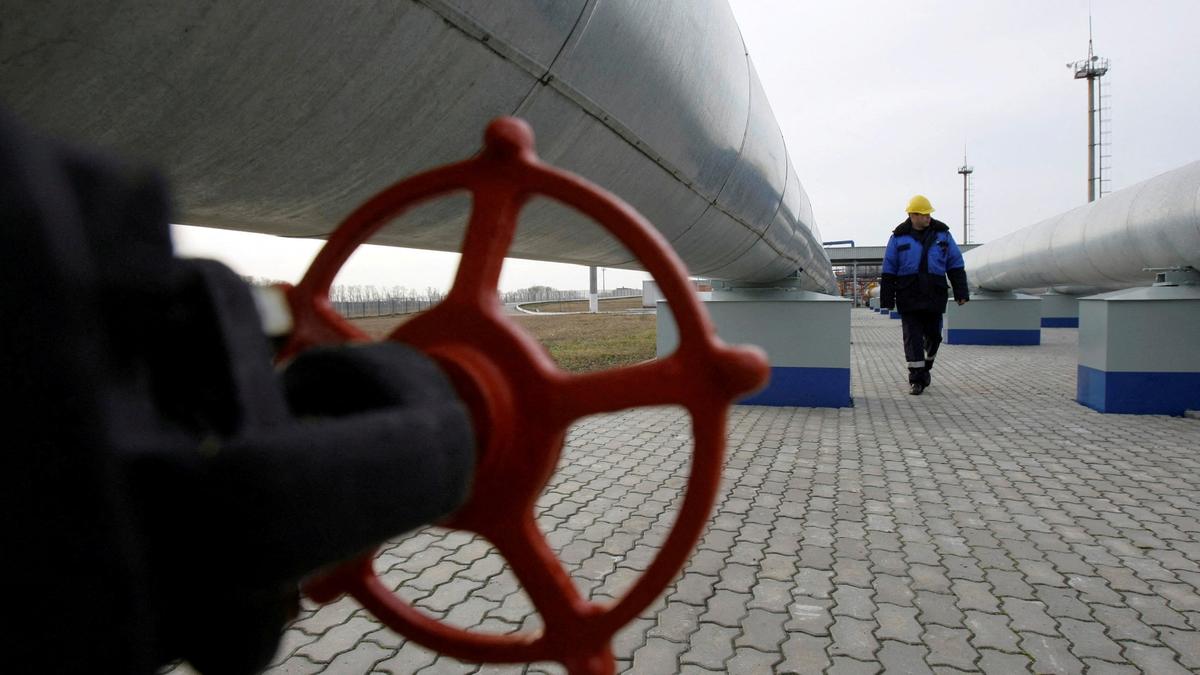Gazprom’s natural gas supplies to Europe declined in August 2024, marking a continued trend of reduced exports. While the company has increased its supplies year-on-year, the overall volumes remain significantly lower than previous years, reflecting a complex geopolitical landscape and strategic shifts in energy markets. This decline underscores the evolving relationship between Russia and Europe in the wake of the ongoing conflict, with ramifications for energy security and future market dynamics.
Declining Supplies: A Continued Trend
Gazprom’s average daily natural gas supplies to Europe fell in August, reflecting a continuation of the declining trend witnessed throughout the year. While the company’s supplies were up compared to August 2023, the overall volume remains significantly lower than pre-conflict levels.
Key Figures:
- August 2024: Average daily pipeline exports decreased to 89.6 million cubic metres (mcm).
- July 2024: Average daily pipeline exports were 91.5 mcm.
- August 2023: Average daily pipeline exports were 91.7 mcm.
The decline can be attributed to various factors, including ongoing geopolitical tensions, shifting market dynamics, and potential strategic decisions by Gazprom.
Impact of the Conflict on Gas Transit
The war in Ukraine has had a significant impact on gas transit routes. Notably, gas transit via Ukraine, which has historically been a major pathway for Russian gas exports to Europe, has been affected.
Ukraine’s Role in Gas Transit:
- Reduced Capacity: Fighting in the Kursk region has hampered the flow of gas via Ukraine, leading to a reduction in transit capacity.
- Alternative Routes: This has prompted increased reliance on other transit routes, such as pipelines through Turkey and the Baltic Sea.
The conflict has forced both Russia and Europe to reassess their energy strategies, leading to a complex interplay of factors affecting gas supplies.
Gazprom’s Strategic Shift: Focus on Asian Markets
The decline in Gazprom’s gas exports to Europe could be linked to its strategic focus on developing new markets, particularly in Asia. Russia has been actively pursuing deals to increase gas exports to China and other Asian nations.
Shifting Priorities:
- Diversification: Diversifying its customer base helps mitigate risks associated with relying solely on European markets.
- Economic Interests: Expanding into Asian markets aligns with Russia’s economic goals and ambitions.
Gazprom’s shift towards Asia highlights a broader trend of global energy diversification, where suppliers seek to reduce reliance on specific regions.
The Evolving Landscape: Implications for the Future
The reduction in Gazprom’s gas supplies to Europe has significant implications for the future of the European energy market. The EU is striving to reduce its dependence on Russian gas through diversification of energy sources and investments in renewable energy.
Key Considerations:
- Energy Security: Ensuring energy security remains a top priority for European nations, prompting them to seek alternative sources of gas.
- Geopolitical Impacts: The energy dependence on Russia creates vulnerabilities, which are amplified by geopolitical tensions.
- Transition to Renewables: The transition to a clean energy economy with increased reliance on renewable sources offers a longer-term solution for reducing dependence on fossil fuels.
The changing energy landscape necessitates proactive measures to secure energy supplies, address geopolitical risks, and accelerate the transition to a sustainable energy future.
Takeaways
- Gazprom’s natural gas supplies to Europe are decreasing, signifying a strategic shift by the company.
- The ongoing conflict in Ukraine has had a major impact on gas transit routes, affecting supplies and prompting the development of alternatives.
- The decline in Gazprom’s exports highlights the growing importance of energy diversification and the transition to renewable energy sources.
- The European energy market is evolving rapidly, and the geopolitical landscape is undergoing significant change. These trends will shape the future of energy markets, creating challenges and opportunities for all stakeholders.




